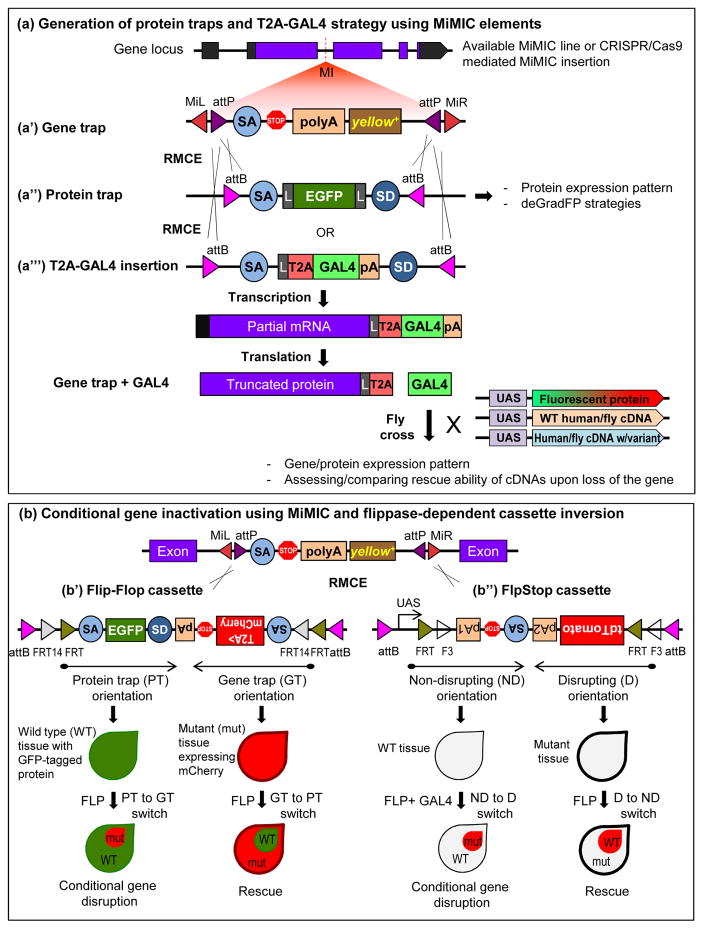FIGURE 3.
Integrated gene manipulation approaches using Minos-mediated integration cassette (MiMIC) (a′) MiMIC elements contain a gene trap cassette and a yellow+ selection marker flanked by attP sites. Using recombinase mediated cassette exchange (RMCE) an artificial exon nested in attB sites can be integrated into MiMIC. (a″) Protein traps can be generated using cassettes containing SA-EGFP-SD, which allows the assessment of endogenous localization of the GFP-tagged protein as well as deGradFP strategies for conditional manipulations. Flexible linker sequence is abbreviated as L. (a‴) Introduction of an artificial exon that contains a self-cleaving T2A peptide causing ribosomal skipping and a GAL4 sequence creates a truncated protein of interest and a GAL4 protein. GAL4 is expressed in the same spatial and temporal pattern as the fly gene, allowing expression of transgenes including the corresponding UAS-fly or human cDNA as well as UAS-fluorescent protein (e.g. GFP, mCherry). (b) Recently, two flippase-dependent cassettes that can be integrated into MiMIC sites were generated to perform conditional gene inactivation: Flip-Flop and FlpStop. Both cassettes are flanked by two different inverted pairs of FRT sites forming a FLip-Excision (FLEx) switch, thereby making the cassettes invertible in the presence of FLP recombinase. (b′) FlipFlop cassette contains two modules that are placed in opposite orientations: a protein-trap (PT) module and a gene-trap (GT) module. The PT module contains SA-EGFP-SD and thus tags the protein with GFP. The GT module contains SA-T2AmCherry-polyA and thus truncates the gene/protein. The T2AmCherry in the GT module marks the mutant cells with mCherry. Presence of flippase can invert one module to the other, allowing conditional and reversible regulation of gene disruption. (b″) FlpStop cassette is designed to have a non-disrupting (ND) and disrupting (D) mode that are placed in opposite orientations. Flippase activity can invert one orientation to the other providing conditional gene disruption and rescue. Presence of the tdTomato marker in the invertible FLEx switch region allows detection of cells that undergoes inversion.

